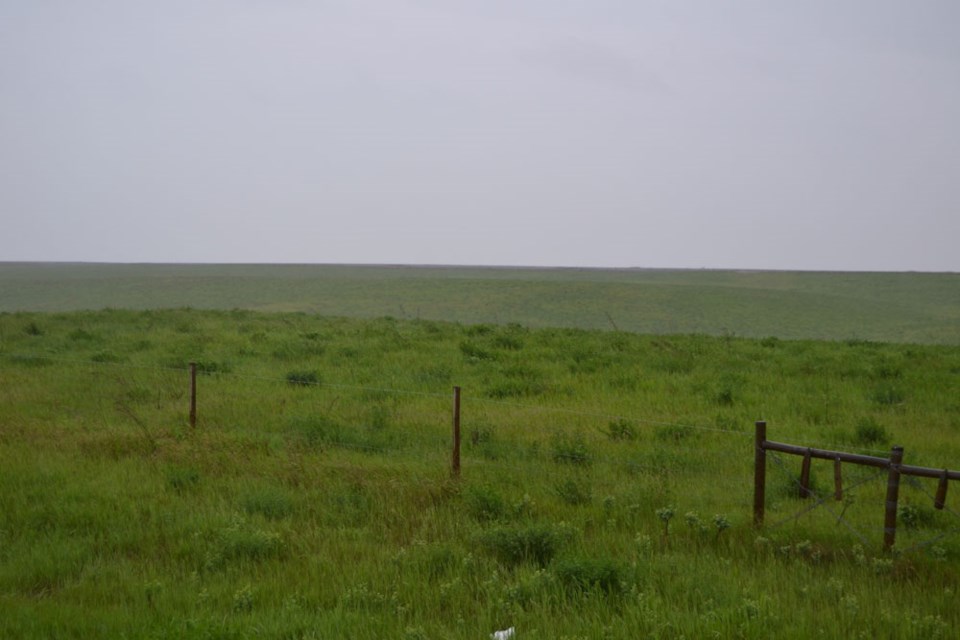One of Westmoreland Coal Company’s biggest priorities is considered before a single piece of coal is taken out of the ground. Environmental superintendent Andrew Hutchison said that the main goal for reclamation is, at minimum, to create an equivalent land capability, leaving the land as good and viable as it was before any mining took place.
"As far as reclamation is concerned, it starts even ahead of mining. Prior to any overburden removal, we will go in with our equipment and remove topsoil, and subsoil layers," said Hutchison. "We either directly place those on areas that have been previously levelled, or will stockpile those, so we're able to get vegetation growing after we've gone through."
Before any mining takes place, the company’s first priority is an environmental impact assessment, determining how much topsoil will be salvaged, and where the slopes and levelled land in an area will be. The ideal end result is viable for farming or set aside for use as wildlife habitat.
When mining operations begin, Hutchison noted that topsoil is pushed into windrows by dozers. The depth of those windrows is based on soil quality measurements set out by the assessments done on the land.
Windrows are arranged at predetermined distances from one another so that when mining is complete and the land to be reclaimed is levelled, the windrows can be pushed into the area by a bulldozer in a sequence, creating an ideal soil depth.
“The dozer can come in and push one up, until they reach the next windrow. Right now, we’re tracking to be close to within two to three centimetres within our target placement depth by utilizing that method,” said Hutchison.
Low-lying areas are established first, in the ground levelling process, noted Hutchison.
“We try to get everything levelled all the way across, and that typically will happen in the winter or in drier conditions, so we have a good shape on the bottom of any areas where there’s water going to be gathering,” he said.
Once the topsoil and subsoil are replaced in an area to be reclaimed, Hutchison said a mixture of seeds is put into the ground, usually entailing hay and pasture grass. The mixture utilizes seeds that will grow into a variety of different native species of plants.
Hutchison noted the chosen plants are the most successful, and capable of growing and flourishing in reclaimed areas. The the seed mix is one that has been developed over the past five years, and created by Westmoreland, in the case of the tame mixes. The company also utilizes a cover crop of fall rye for reclaimed land. Many of the seeds planted in reclamation are in the form of plugs created at the Shand Greenhouse.
“There are certain requirements in certain areas, that we have to seed it to a mixture of native grasses similar to what was there, ahead of time,” said Hutchison. “If we’re seeding in an area that has a lot of moisture or is on the side of a hill, we have something in our reclamation mix that’s going to be successful there.”
Trees often grow in reclaimed areas on their own, Hutchison noted, but the company also sources trees grown at the Shand Greenhouse, and from the Prairie Farm Rehabilitation Administration (PFRA) Shelterbelt Centre.
“In the past, we’ve planted a considerable number of trees,” said Hutchison. “We’re looking at getting that established again.”
Hutchison said seeded areas are specifically monitored for a minimum of five years, to check species composition, and to make sure there is sufficient successful growth of seeded species.
Another priority in Westmoreland’s reclamation efforts is creating water bodies in areas that have been seeded and levelled, so that when the land is reclaimed, there is water available for any livestock or wildlife that end up utilizing that particular area.
“We have a good shape on the bottom of areas we reclaim, so there’s going to be water gathering,” said Hutchison. “Aquatic vegetation tends to work itself into any area that has water gathering in it. Mother Nature does some of this on her own.”
Hutchison said that successful vegetation and water bodies created through the levelling process always attracts wildlife.
“We have a lot of mule deer, a lot of white tail deer and a couple of moose moving around, out there. Water fowl and muskrats are hitting our water, sometimes, even before we have any vegetation growing around it,” he said.
Hutchison added that any animals in an area to be mined are all relocated to areas that are approved by the Department of of Fisheries and Oceans and the Ministry of the Environment.




